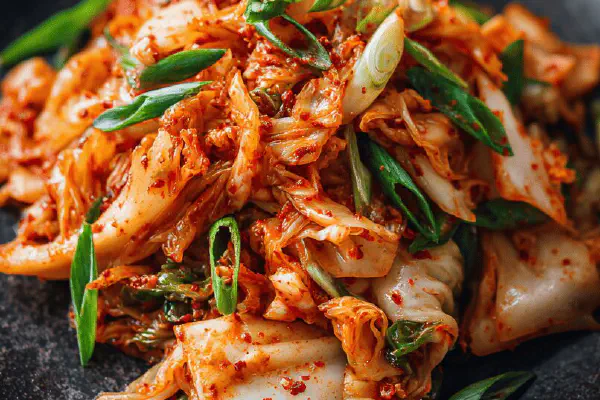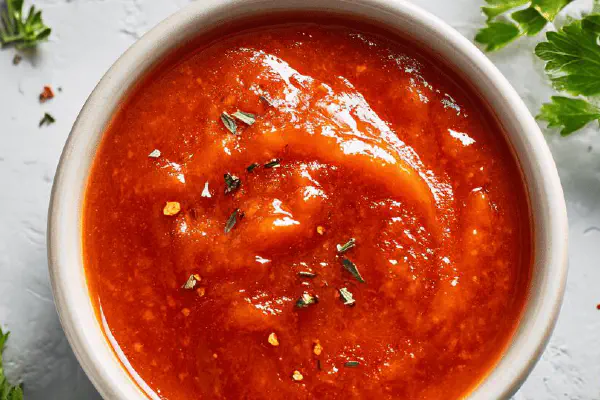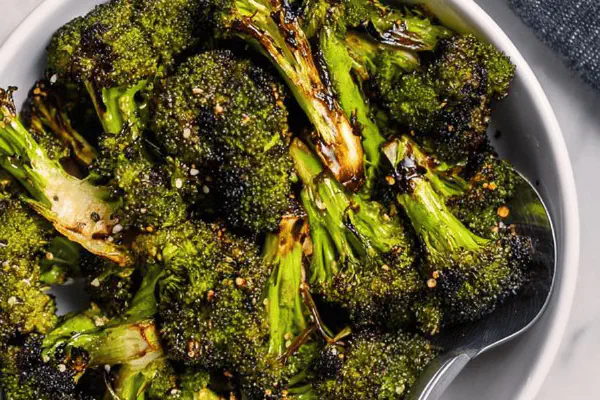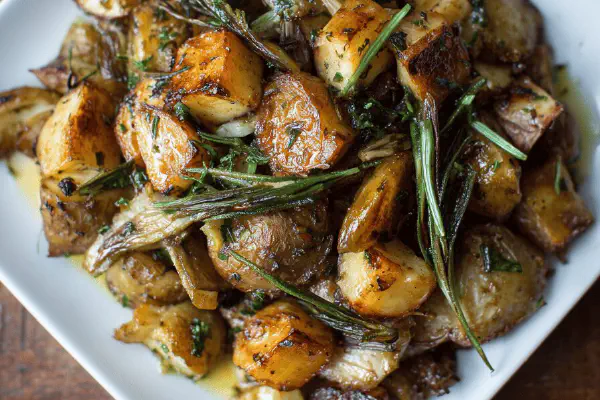Rustic Fermented Kimchi

By Emma
Certified Culinary Professional
Ingredients
- 1 head napa cabbage around 1 1/8 kg (2 1/2 lb), chopped into 4 cm (1 1/2 in) cubes
- 260 g (1 3/4 cups) daikon peeled, sliced into 4 cm (1 1/2 in) thin sticks
- 100 g (3/4 cup) carrot, peeled and diced small
- 50 g (3 tablespoons plus 2 teaspoons) kosher salt
- 10 scallions cut in 4 cm (1 1/2 in) segments, whites and greens separated
- 4 large garlic cloves peeled
- 1 Asian pear medium size, peeled, cored, cut into cubes
- 35 g (4 tablespoons) smoked paprika and cayenne pepper blend (2 parts smoked paprika to 1 part cayenne)
- 25 ml (1 1/2 tablespoon) light brown sugar
- 25 ml (1 1/2 tablespoon) fresh ginger roughly chopped
- 30 ml (2 tablespoons) tamari sauce
About the ingredients
Method
- Cut cabbage lengthwise then chop into 4 cm squares. No fine dicing here — bigger chunks mean crunch remains post-fermentation.
- Mix cabbage, daikon, carrot, and kosher salt in a large bowl. No rinsing yet. Salt pulls water out, softens toughness. Press down with weight (a heavy plate and canned goods work well). Refrigerate 1 hour 45 minutes — a slight extension because smaller salt quantity means slower draw.
- Drain liquid through a sieve. Rinse veggies under cold running water twice to wash excess salt but don't overdo or they’ll be mushy. Let drain set 50-55 minutes with weight again to tighten texture and remove excess brine.
- Discard drained water. Transfer veggies back to bowl ready for seasoning.
- Meanwhile sterilize jars by boiling or dishwasher sanitize on hot cycle. Avoid contamination — ferment won't happen right without clean environment.
- In a food processor, pulse scallion whites, garlic, Asian pear cubes, smoked paprika/cayenne mix, brown sugar, ginger, and tamari until thick paste forms. Not pureed smooth – some texture here; you want bursts of flavor throughout.
- Add mix to vegetable bowl along with scallion greens. Knead with gloved hands (save your nails) until every piece wears the seasoning thickly. This step crucial — incomplete mixing results in uneven fermentation and flavor pockets.
- Pack kimchi tightly into jars leaving 2.5 cm (1 inch) space at top. Press down well to squeeze out air pockets — bubbles can cause jars to explode during fermentation if left trapped. Wipe rims clean with damp cloth.
- Cover jars with cheesecloth or thin linen; secure rings loosely to allow gases to escape but keep dust out.
- Set jars in a cool, dark place between 17 and 19 °C (63 to 66 °F). Slightly cooler than usual, slows fermentation for more balanced flavor. Expect 3½ days for first bubbles and slight sour aroma. Check daily, press down veggies if needed—submerged veggies ferment best. After 4 days, smell should be sharp but not unbearable.
- Swap cheesecloth for solid lids after initial fermentation. Refrigerate to slow process. Keeps crunch and tang for 9 to 11 months if sealed and constantly submerged in brine.
- Each time you use some, press down the mix to expel trapped air and maintain anaerobic environment.
Cooking tips
Chef's notes
- 💡 Cut cabbage into chunkier squares—not fine dice—texture means crunch post-fermentation. Bigger pieces slow mush, let the salt do slow work. Salt timing crucial—too quick and cabbage softens mushy; too slow, bitter edges develop. Weighting veggies tight to pull moisture but not flatten—plate plus cans work well. Don’t rinse yet, salt draws water first.
- 💡 Drain then rinse veggies twice under cold running water. Delicate balance here. Too much rinsing, lose flavor. Too little, overly salty or kill ferment microbes. After rinsing, press veggies with weight again for almost an hour. Tightens texture, removes harsh brine. These steps key for crisp bite and even fermentation.
- 💡 Pulse scallion whites, garlic, Asian pear, smoky paprika-cayenne mix, ginger and tamari till thick but not puree smooth. Texture bursts of flavor still needed. Scallion greens chopped large and hand-kneaded in last for fresh color contrast and bite. Wear gloves—garlic plus red chili stains linger otherwise. Mixing unevenly means flavor and ferment uneven—don’t skip kneading.
- 💡 Packing jars tight is not optional; make sure to press down firmly to expel trapped air bubbles. Air pockets cause jars to explode—fermentation gases build inside. Cheesecloth covers loose rings allow gases escape while sheltering dust. Ferment cooler than room temp, 17-19 C slows sour buildup, evens umami development. Bubble rise and subtle sour aroma signal ready stages.
- 💡 After 4 days swap cheesecloth for solid lids. Refrigerate to slow fermentation. Keeps crunch and tang locked for up to 11 months if veggies submerged constantly in brine. Each use press down veggies to expel trapped air inside jar to maintain anaerobic environment — stops molds and preserves tangy crunch longer.
Common questions
What if kimchi gets mushy?
Usually salt timing off. Too fast draw causes mush. Cut bigger chunks, press weight properly. Rinse carefully—never overdo otherwise lose flavor. Chill fermentation temp slows down unwanted softness.
Can I substitute fish sauce with something else?
Tamari works well as soy-depth option, especially gluten-free. Other umami sources like miso paste possible but adjust salt. Avoid anything with strong marine smell unless you want traditional touch.
How to prevent mold during fermentation?
Press veggies down hard, remove air bubbles. Keep veggies submerged under brine. Cover jars with breathable cloth initially to vent gases. Change cloth if dusty. Store ferment at steady 17-19 C—too warm encourages mold. Cooling fridge storage sealed after first ferment phase.
How long can homemade kimchi be stored?
Up to 11 months if kept submerged and sealed. Refrigerate after initial bubbling and sour aroma set in. Keep pressing veggies each use to stop air pockets forming. Good jar seals important otherwise will spoil faster or lose crunch.



